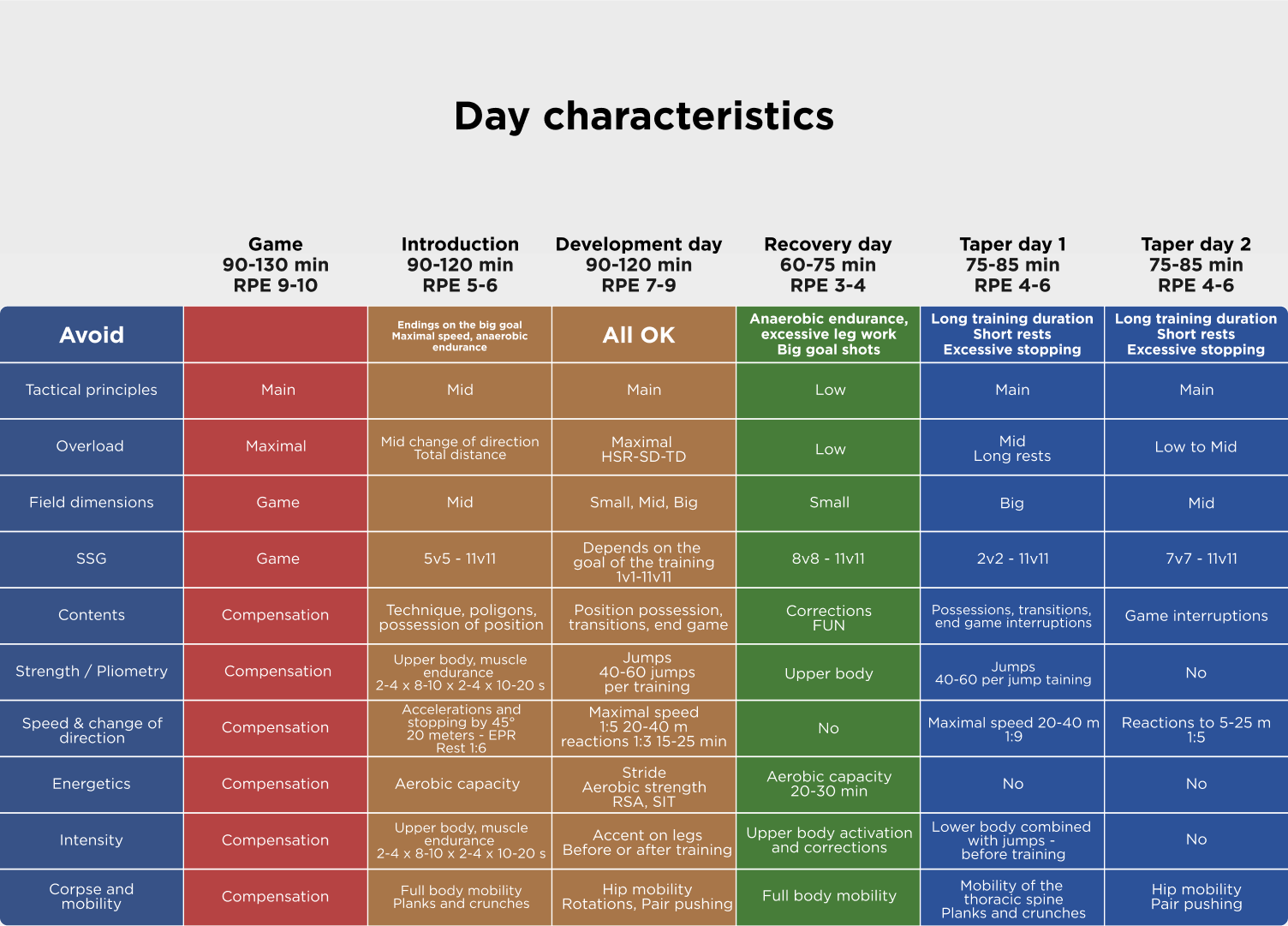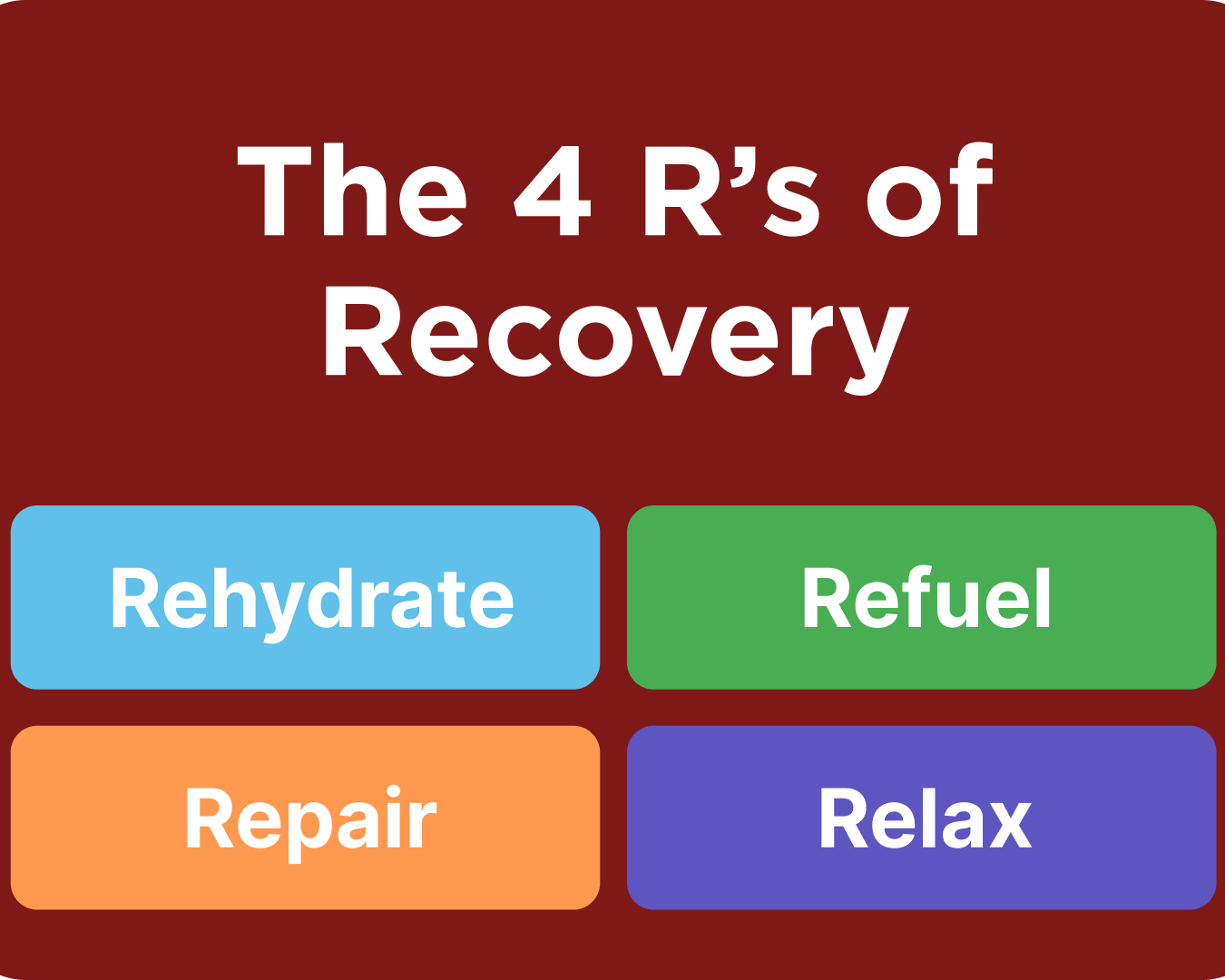In the first blog, I wrote about the initial factors that influence the creation of a training day during the season, with one of the key factors definitely being the timing of the previous match. I gave the example of MD+1 and we discussed how the minutes played are the main factors that dictate the content and structure of the training day. To address this, we divided the team into two groups: one in recovery mode and the other in compensation mode. In a conversation with my colleague Saša Semeredi (whom I warmly greet!), we discussed compensatory training, and Saša shared a simple yet powerful insight. He said that compensatory training is best done on the day of the match. Why is this the case? Because throughout the entire week, we work hard to be in the best condition on that day, not the day after or two days later. While it can be challenging to implement, it’s a goal we should consistently strive for.
Match Day +2 and the Difference between Senior and Academy Programs
The structure of MD+2 depends on the length of the week we are currently in.
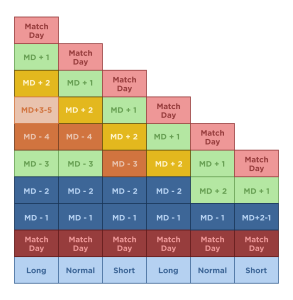
As seen from the photo, we categorize microcycles into long, normal, and short durations, each with a varying number of days. In the case of a long microcycle, MD+2 may appear distinct from that of a short microcycle with only four days between matches. In shorter microcycles, some football elements might be integrated into the recovery process.
One of the key questions in periodization is when to schedule a day off for players and when to prioritize recovery after a match. Specifically, the decision revolves around whether to dive a day off on MD+1 or MD+2. This decision often depends on the team’s goals and objectives.
In the senior program, I might invite players for recovery and leveling training on MD+1, as mentioned in the first blog. I like to meet with the players the day after a match to assess their condition and initiate targeted recovery protocols. The training session is scheduled for 11 a.m., ensuring players have adequate time for sleep and the nutrients they need on both match day and the following day. This way, I ensure that they don’t celebrate excessively or wander around after the match and can return to bed promptly to be well-rested for the next day.
The group in compensation mode will also undergo supplementation because failing to do so may result in players not receiving an adequate stimulus during the week. Given the low-intensity training on MD-1, the day before the match, if we also grant them a day off on MD+1, they might go three days without proper training stimulus, which is not ideal for their long-term development.
A study by Martin Buchheit and colleagues [1] examined the relationship between the length of the week, injuries in matches and training, and common practices in elite football teams. They found that the timing of days off within various turnarounds had an impact on injury rates. In particular, sequences that included a day off at MD+2 were associated with lower injury rates for the 3- and 7-day turnarounds compared to other sequences. This suggests that the timing of rest and recovery days can significantly influence injury rates in football players.
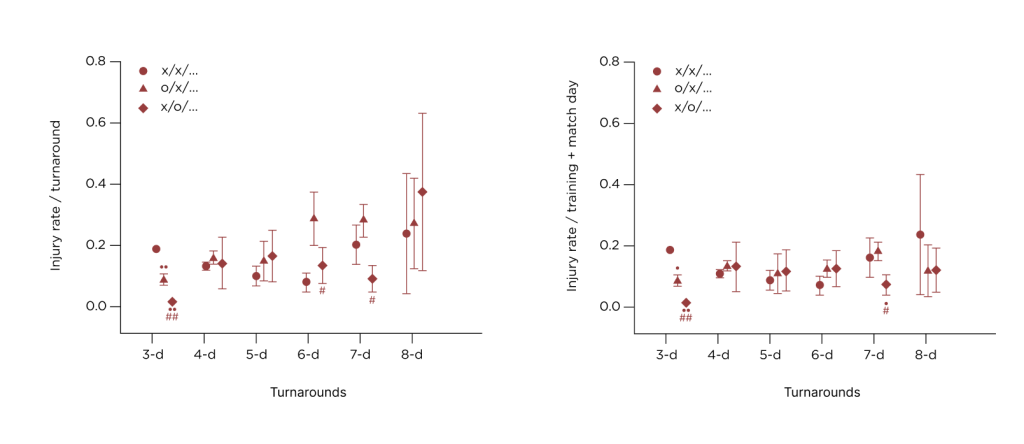
Figure 2 shows average (95% CI) non-contact injury rates per turnaround, encompassing both training and match days (left panel), and non-contact injury rates specifically for training + match days (right panel) for the three primary sequences. These sequences include no day off (x/x/…), a single day off at D+1 (o/x/…), or a single day off at D+2 (x/o/…), across all turnaround periods. Asterisks () and double asterisks (*) indicate moderate and large differences compared to the x/x/… sequence, respectively. Pound signs (#) and double pound signs (##) indicate moderate and large differences compared to the o/x/… sequences, respectively.
Numerous indicators point towards giving players a day off on MD+2, as supported by research, particularly when there are three or seven days until the next match. As we’ve discussed, the length of the week significantly influences decision-making. From my point of view, one of the primary factors that can impact injury rates is proper programming, the execution of that program, and team monitoring. It would be valuable to examine the distribution of workloads and the types of programs used on these days. This might give us a clearer understanding of the dynamics within the teams. However, the implementation of these programs and the recovery methods used may also have affected injury rates. I’ve even come across cases where some clubs underreport the number of injuries to improve their rating. These factors are worth mentioning because in practice, various approaches are observable, ranging from inadequate periodization strategies to the content and parameters used in those strategies, as well as inappropriate compensatory or recovery methods. There’s a wealth of literature and knowledge available today to help avoid such mistakes, and I believe we can do much better. Perhaps I’ll write about this on another occasion.
Now, when should you use and apply training on MD+2?
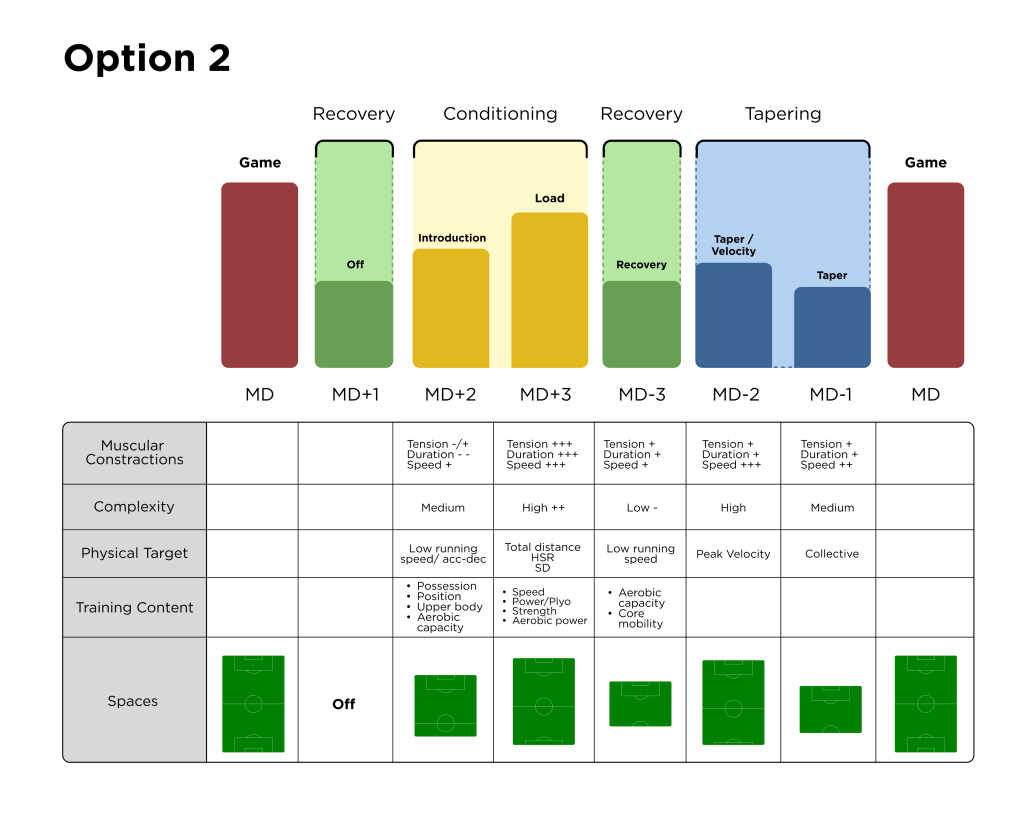
When working with senior teams, this scenario is typically chosen when there isn’t enough time to adequately prepare for the upcoming match in the following week, and the goal is to optimize each day for mental, tactical, and physical player preparation. While it may slightly impact recovery on the second day, the critical factor lies in selecting the appropriate content and parameters for these activities. This includes considerations such as dimensions, the number of players, content density, intensities, tactical strategies, technical demands, speed of play, and more.
In practice, for senior players, I would prefer a scenario without a rest day, using MD+2 as the starting point of the week. If the situation were reversed (MD+1 training, MD+2 rest), I would utilize MD+3 as the beginning of the week and allocate that day to ‘ignite the team’s engines,’ as Verheien mentions in his book (another recommended read for anyone working in football) [2].
Transition to Football Academies
I have often utilized the scenario shown in Figure 2 in my work with football academies. Planning training on MD+2 provided me with enough time to work with young players throughout the week.
In football academies, the primary objective is player development and preparing them for the senior level (although, let’s not deceive ourselves, results are still important).
By scheduling training on MD+2, I could introduce the players to the week and prepare them for the intense training session that follows the next day. I would call this type of day an introductory-regeneration day or an extensive day, as coaches often refer to it in academies. Typically, it involved specific-focused training, and if I were to rate the representation of each category on a scale, it would look something like this:
- Tactical: 5
- Mental: 5
- Emotional: 5
- Physical: 6-7
In terms of the body’s system load (lungs-legs-head), the load would be 6 to 7 for the lungs, 5 for the muscles, and 4 for the head. This indicates that there’s room for quite a bit of content on this day. When a coach asks me what we can do on that day, my response typically depends on the tactical objective. Based on that objective, we can create a framework upon which tactical content can be developed.
Frequently, when coaches learn about an extensive or introductory day in the weekly schedule, they may incorporate activities like basic technique work in pairs, passing circles, or variations of passing drills such as a four-square setup. While these exercises might achieve the conditioning goal and put players in an extensive training zone, they may lack football-specific stimuli. There’s no decision-making involved, no structure or problem-solving within the game. However, circular drills aren’t the only activities that can be used on an introductory day. I often emphasize that any content can be adapted for any day of the week; it’s simply a matter of adjusting the parameters. The same finishing exercise, for instance, can be employed on MD+3 or MD+1, but the implementation may differ.
References
- Buchheit, M., Settembre, M., Hader, K., & McHugh, D. (2023). Planning the microcycle in elite football: To rest or not to rest? International Journal of Sports Physiology and Performance. https://www.researchgate.net/publication/366867017_Planning_the_Microcycle_in_Elite_Football_To_Rest_or_Not_to_Rest
- Verheijen, R. (2014). The Original Guide to Football Periodisation – Part 1. World Football Academy BV. https://www.amazon.com/Original-Guide-Football-Periodisation-Part/dp/949174500X

